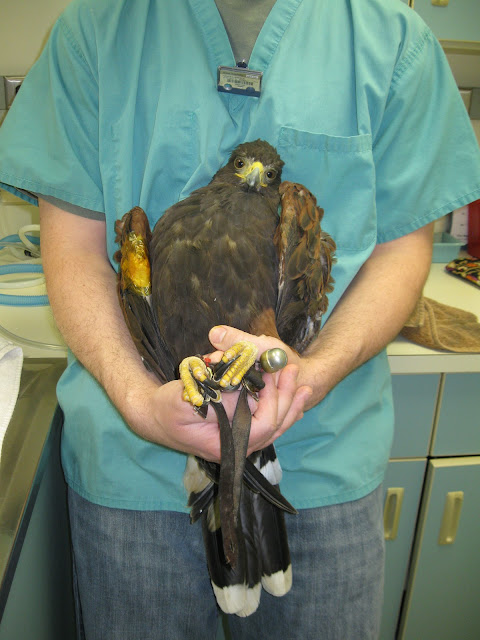Last week Rich and I inspected the kestrel nest boxes that we put up. I didn't put up any new ones this year . . . perhaps there will be time after all the summer projects. Anyway, of the 5 boxes I have placed, this year only one was occupied by kestrels. This inspection occurred on Thursday, 6/13/13. Last year the pair of birds that nested in the box by Hwy 44, right out near the farmhouse in Spring Grove, tended to stay in the box with their eyases during the inspection. The occupied nest this year is in the back field. This parent stayed tight, so I'm wondering if the pair of parents that nested in the box by Hwy 44 moved their nest this year, to the back box. I could hear peeping, but not see the babies. It was a quick check to confirm residency. We may go back one other time, in a week or so, to see how many chicks are in the nest. I am registered with the American Kestrel Partnership. I logged my findings, but need to complete the entry with further information.
The other boxes were empty of any nestlings, but two showed signs that there had been a nest. I'm not certain who the residence were. They were grass filled, with a small, dainty cup to one side. I'm fairly certain it was not starlings, as they mush everything down through their occupation.
For the first time, the nest at Olga's farm was occupied.
These are Tree Swallows. I know because I saw the parent when it flew out of the nest, but also, all the feathers in the nest are a clue. Tree Swallows like to line their nests with feathers. I won't come back to this box this year as it is not only not necessary, but also because it was at a fairly unreachable corner that the Hanson family farms. To get to it required us to drive across the field with crops planted. Any further disturbance could damage the crops. They all seemed to get a bit of a late start this year, the crops, because of the very cool and wet Spring, but now they are getting some height to them.
Yesterday, Tuesday June 18th, Rich and I visited Greg's family to check out his new mews. He has it mostly built, but it needs some finishing work. I gave him my 'two cents worth' on how he should complete the building. He also needs to construct a weathering yard. I'm sure he'll have that all done fairly soon, so he can get inspected and get his permit in line for this Fall's trapping season. While we were there, talking, he mentioned that he had a kestrel nest box as well that he had seen some kestrel activity at. He wondered if there would be any chicks. I suggested we get a ladder and go see. I didn't have a camera, but I can confirm there were four nestlings, with one un-hatched egg. They eyases were probably about 10 days old - still fluffy, but feathers starting to show. I showed him the American Kestrel Partnership site and encouraged him to register himself and his nest box.
In three days it is the Summer Solstice! It is just now warming up enough to feel like Summer. Maybe we will get lucky and have a nice, long, temperate Summer, drifting slowly into a temperate Fall. Nice long Fall Seasons are great for hawking!












